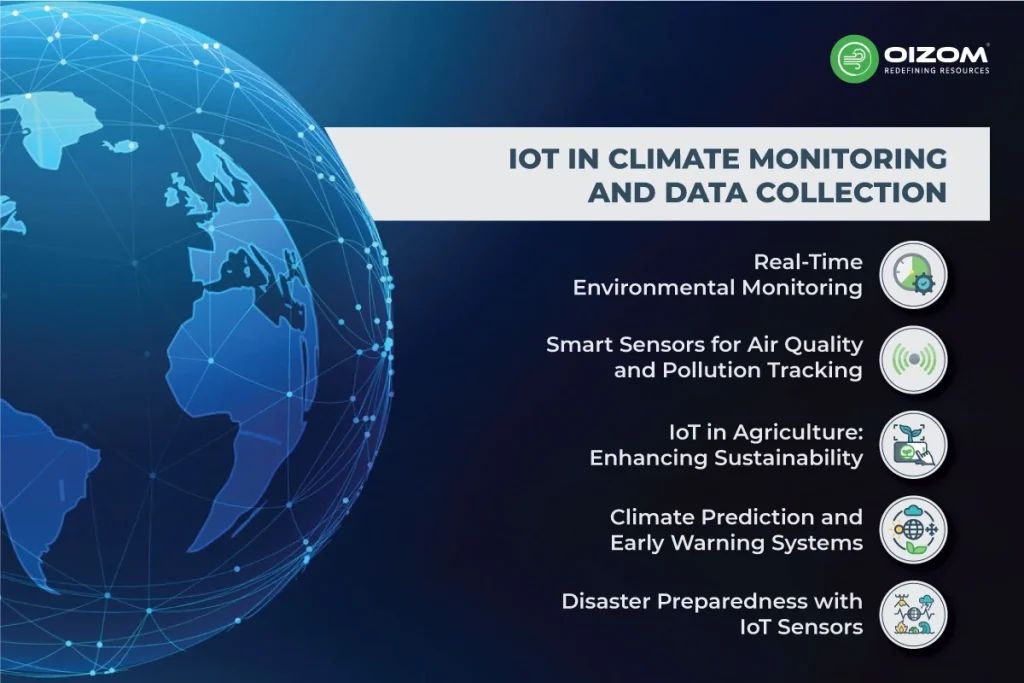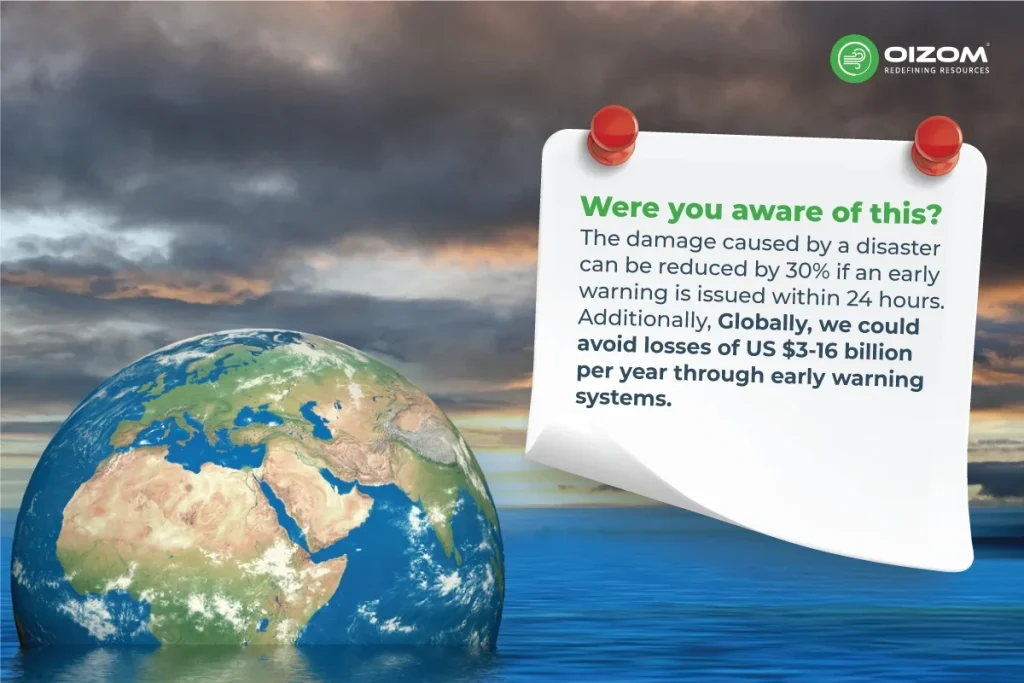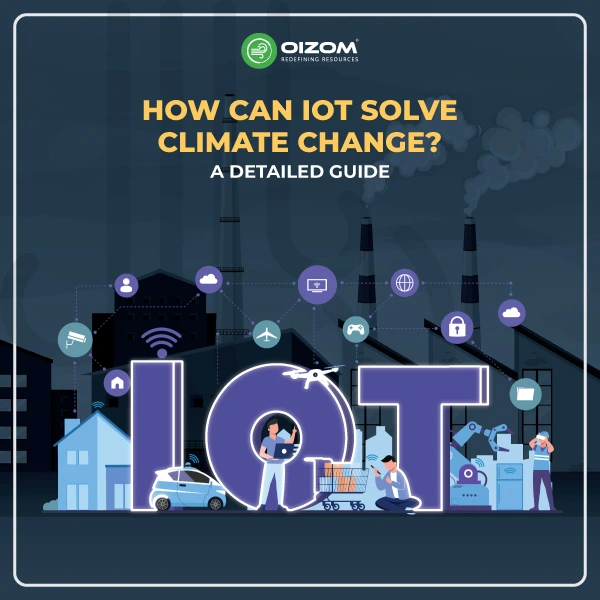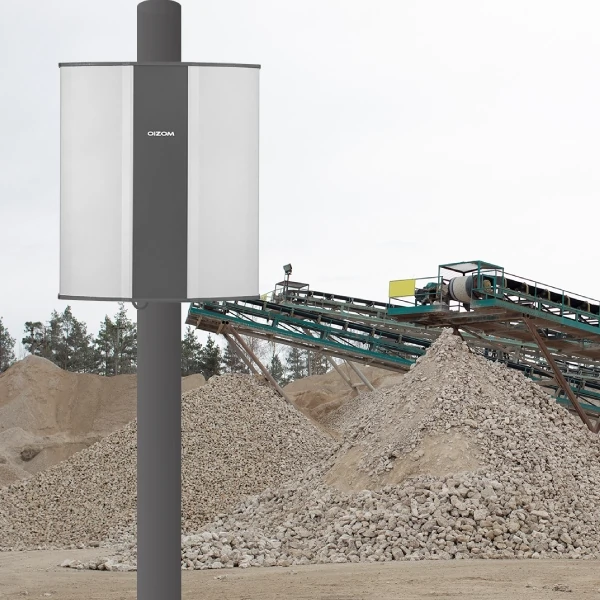Key Takeaway Points
- IoT as a Solution: IoT offers practical tools to tackle climate change by optimizing energy use, reducing waste, and monitoring environmental conditions.
- Technology’s Role: Tech innovations like IoT, AI, and smart grids are helping industries manage energy use and reduce emissions efficiently.
- Real-Time Monitoring: IoT-enabled sensors collect real-time data on air quality, temperature, emissions, and pollution to address climate challenges proactively.
- Emission Reduction: IoT in transportation and industrial processes helps reduce carbon emissions by optimizing traffic and enhancing efficiency.
- Smart Agriculture: IoT sensors help farmers monitor crops, manage resources, and improve sustainability in agriculture.
- Early Warning Systems: IoT-based systems enhance climate prediction and early warnings, helping reduce disaster-related damage.
- Waste Management: IoT enables smart waste management by optimizing collection, preventing overflows, and tracking disposal efficiency.
- Challenges in IoT Implementation: Issues like infrastructure, cost, and energy consumption must be addressed for effective IoT adoption.
- Sustainability Goals: Leveraging IoT can encourage businesses to reduce their environmental impact and contribute to a sustainable planet.
How IoT Can Make a Difference in Reducing Climate Change? Understand it in detail.
We’re living in an exciting time of innovation, where smart cities, connected cars, and wearable devices are becoming part of our everyday lives. But none of this would be possible without the Internet of Things (IoT). IoT has completely changed how we connect and interact with devices and each other through a seamless, powerful network. It’s the driving force behind this tech revolution, making everything smarter, faster, and more connected.
The Internet of Things (IoT) is more than a tech buzzword. It’s a powerful tool that can help tackle one of the most pressing challenges of our time: climate change. IoT can optimize energy use, reduce waste, and monitor environmental conditions like never before by connecting devices and systems to gather real-time data. From smart cities that manage resources efficiently to precision agriculture that reduces emissions, IoT offers a practical, scalable solution for a sustainable planet. In this blog, we will discuss the role of technology in combating climate change, IoT in climate monitoring and data collection, and its challenges.
The Role of Technology in Combating Climate Change
Technology is critical in the fight against climate change. It provides new solutions to cut greenhouse gas emissions, monitor environmental changes, and promote sustainable behaviors across multiple sectors. From renewable energy sources like solar and wind power to improved carbon capture devices, technology is giving us the tools we need to combat the effects of global warming.
Climate change is one of the most serious global crises we are now confronting, resulting from our failure to respond properly at the appropriate moment. While it may appear that little is being done to protect the environment, many businesses are turning to IoT to mitigate the negative consequences of climate change and other environmental threats.
In particular, advancements like the Internet of Things (IoT), AI-driven data analytics, and smart grid systems are helping industries optimize energy use, reduce waste, and enhance resource management efficiency. These technologies enable us to track and respond to environmental changes in real time, offering greater control over energy consumption, pollution, and overall environmental impact.
IoT climate change solutions can help reduce the effects of climate change by allowing us to tackle:
- Energy Consumption
- Air Pollution
- Carbon Dioxide Emission
Optimizing Energy Consumption in Buildings
Excessive energy consumption is one of the primary drivers of climate change. IoT-powered Asset Condition Monitoring (ACM) systems, smart grids, and smart meters are excellent tools for managing or automating energy savings.
ACM systems offer significant energy savings. They can monitor asset data in real time and generate tailored analytics to identify unproductive operations. Proactive measures can then be implemented to eliminate inefficiencies.
Smart networks and meters are invaluable in terms of saving electricity. A smart grid is an electricity network that uses IoT devices to connect providers and customers, allowing suppliers to control demand, maintain the distribution network, save energy, and reduce costs.
Emission Monitoring and Reduction
Air pollution, seen as a modern-day curse, is another key component harming our planet’s climate. Fast urbanization, rapid industry, and a huge increase in automobiles have all contributed to the rise in pollution.
IoT applications can help reduce air pollution by monitoring air quality in real time. This can be accomplished by dispersing small, low-cost, mobile-enabled sensors across cities, from street lights to bicycles and public transportation, offering a more comprehensive picture of air quality levels.
Furthermore, this real-time data can be used to investigate the causes and variations in air pollution. They can be distributed to the general public via apps, providing them with a clear grasp of the pollution levels in their area and how they can act to reduce them.
IoT in Transportation: Reducing Fuel Consumption and Emissions
Surface traffic emits a considerable amount of greenhouse gases and hence contributes significantly to global climate change.
Smart traffic management enabled by IoT can help cut CO2 gas emissions from automobiles. The goal here is to collect data from various sources, such as traffic cameras, car GPS, sensors, and so on, and use it to analyze and comprehend traffic patterns.
For example, by connecting vehicles’ GPS and traffic cameras, the area’s management staff can gather valuable information about real-time traffic. Furthermore, a message can be sent to car owners informing them of the traffic state of the road they are driving on. This results in a more pleasant driving experience, significantly reduced traffic congestion and safe transit.
IoT in Industrial Processes
The Industrial Internet of Things (IIoT) refers to using smart sensors, actuators, and other devices, such as radio frequency identification tags, to improve manufacturing and industrial operations. These devices are linked to facilitate data collection, exchange, and analysis. The insights gathered from this procedure contribute to increased efficiency and reliability. IIoT, also known as the industrial internet, has applications in various industries, including manufacturing, energy management, utilities, and oil and gas.
IoT in Climate Monitoring and Data Collection

The Internet of Things (IoT) is transforming climate monitoring and data collection by providing real-time insights into environmental changes that were previously difficult to detect. IoT-enabled sensors and devices can be deployed throughout several ecosystems on land, in the oceans, and in the atmosphere to continually collect crucial data such as temperature, humidity, air quality, greenhouse gas emissions, etc. This ongoing data stream provides a detailed and accurate picture of the planet’s shifting climate.
With the power of IoT, we’re not just collecting data. We’re using it to predict trends, optimize resource usage, and implement targeted interventions to mitigate the impacts of climate change. The real-time capabilities of IoT offer the speed and precision needed to respond proactively to emerging environmental threats.
Real-Time Environmental Monitoring
More than ever, environmental monitoring is essential to maintaining both the environment and our health. The environment is becoming more and more threatened by pollution as a result of rising energy consumption brought on by the growth of the human population and industrial development. Scientists and world leaders are increasingly relying on data science and smart technologies to assess and lessen the environmental impact of human activity. The technologies used in real-time environmental monitoring systems include a wide variety of hardware, software, and methodologies.
Are you curious how Oizom detects Hydrogen Chloride (HCl) fumes at the Godrej Manufacturing Unit? Dive into our case study for an in-depth look!
Smart Sensors for Air Quality and Pollution Tracking
Dispersed environmental sensors track and log environmental conditions, sending data in real-time over the Internet through custom connections or their API. Present-day air quality monitoring devices are expensive and challenging to calibrate and maintain. This now alters: Oizom Instrument’s air quality devices provide hyperlocal real-time data on air quality at a lower cost than traditional monitoring devices. They can also be deployed almost anywhere because they are significantly compact. It has never been this simple to build networks for monitoring air quality.
IoT in Agriculture: Enhancing Sustainability
Products for IoT-enabled smart agriculture are made to automate irrigation systems and use sensors to monitor crop areas. Consequently, farmers and related organizations may conveniently and remotely check agricultural conditions.
The term “smart agriculture” mostly refers to the usage of IoT technology in agriculture. What is IoT-based smart agriculture, then? Through Internet of Things (IoT) sensors, farmers may gather environmental and machine metrics to help them make better decisions and enhance almost every element of their operations, from crops to livestock.
Did you know this? The global smart agriculture market size is expected to triple by 2025, reaching $15.3 billion (compared to being slightly over $5 billion back in 2016). Because the market is still developing, there is still ample opportunity for businesses willing to join in.
Climate Prediction and Early Warning Systems
An IoT-based weather monitoring system can significantly enhance the accuracy of weather forecasts and climate predictions by collecting large amounts of real-time data. These systems also power early warning solutions that identify potential weather-related hazards, enabling timely action to protect lives, livelihoods, and property at risk.

Disaster Preparedness with IoT Sensors
IoT plays a key role in disaster management by enabling prompt and effective decision-making. Authorities can gather real-time data on the severity of a disaster and its effects on the impacted areas by utilizing IoT-enabled environmental monitoring devices such as sensors, cameras, and drones. They will be able to make decisions and respond quickly to the situation with the help of this data.
IoT in Waste Management
Across the world, waste management is a major concern for towns and cities. Appropriate garbage collection and disposal systems are necessary in many areas, and the systems in place frequently need to improve. One innovative answer is provided by the Internet of Things (IoT). Waste management procedures for businesses and governments can be greatly streamlined by using IoT-based waste management solutions.
Smart Waste Collection and Disposal
Combining AI vision with IoT sensors can automate processes from collection to disposal. Cities are deploying smart bins with Internet of Things sensors that sound an alarm when they’re full. These systems increase energy efficiency by optimizing waste collection routes and preventing bins from overflowing. IoT may also actively monitor disposal procedures and lessen the need for manual waste sorting.
Enhanced Understanding of City Waste Management:
IoT platforms can collect vast amounts of data from a city’s waste management operations. This data provides detailed analytics on waste collection volume, fuel usage, emission rates, energy recovery, and other metrics. Cities and municipalities can leverage this data to improve processes and reduce waste management costs.
Challenges and Considerations in Implementing IoT for Climate Change
In this digital transformation era, the Internet of Things (IoT) has emerged as a potent instrument for addressing these difficulties head-on. Using IoT sensors and devices for environmental monitoring, we can collect real-time data, obtain useful insights, and take proactive steps to protect our world. However, this disruptive technology requires us to handle the complexities of data privacy and security. One major hurdle is the need for robust infrastructure to support the vast network of connected devices, especially in remote or underdeveloped areas.
The high cost of deploying IoT technology, maintaining devices, and managing data can also hinder widespread adoption, particularly in regions with limited financial resources. Furthermore, IoT devices’ energy consumption must be minimized to prevent adding to the carbon footprint, making the need for energy-efficient designs and renewable power sources critical.
Conclusion
In conclusion, the Internet of Things (IoT) is vital in combating climate change. Its impact goes beyond merely reducing carbon footprints; IoT is key to detecting environmental threats, providing valuable insights into climate patterns, and helping sustain resources. As the world faces increasing environmental challenges, utilizing IoT to develop sustainable solutions is crucial. This blog highlights how IoT can be leveraged to reduce the environmental impact of human activities, encouraging more companies to adopt IoT devices and applications to lower their carbon footprint.
At Oizom, we’re committed to leveraging IoT technology to create effective environmental monitoring solutions. Our advanced systems provide real-time data on air quality, weather patterns, and environmental factors to help cities and organizations make informed decisions. Learn more about how we use IoT to combat climate change at Oizom.






